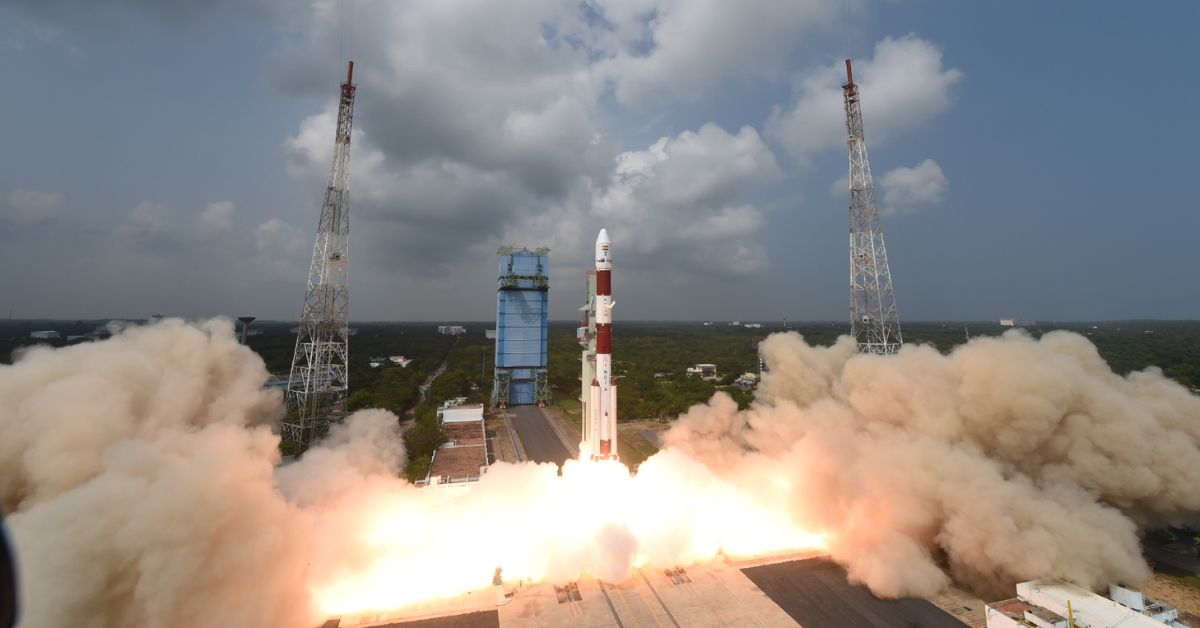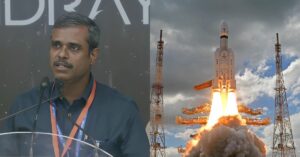Bengaluru Startup Behind 1 of 9 Satellites Deployed by ISRO’s PSLV Rocket
Bengaluru-based start-up Pixxel launched Anand, its third hyperspectral satellite onboard the PSLV, to capture our planet in detail and provide environmental data.

Feature Image Courtesy ISRO
The Indian Space Research Organisation (ISRO) launched the Earth Observation Satellite — Oceansat (EOS-06) and eight nano-satellites on a PSLV-C54 rocket on Saturday.
What makes the final mission of the Polar Satellite Launch Vehicle (PSLV) for this year even more special is the presence of three nano-satellites developed by two Indian startups.
Bengaluru-based start-up Pixxel launched Anand, its third hyperspectral satellite onboard the PSLV. This is the first time the company conducted a launch from Indian soil.
This comes a few days after India’s first privately-developed rocket, Vikram-S, was launched on November 18. It is developed by Hyderabad-based startup Skyroot Aerospace Private Limited.
Apart from that, Hyderabad-based Dhruva space launched two Thybolt satellites. These are amateur (ham) radio communication nanosatellites, intended to provide support to radio enthusiasts across the world.
In June 2022, Dhruva Space successfully tested and space-qualified its Satellite Orbital Deployer onboard the PSLV-C53.
All About Anand
Anand is a 15 kg satellite that will help Pixxel prove its imaging and technical capabilities. It will view our planet in detail and provide environmental data through more than 150 wavelengths.
For Pixxel, the launch of Anand signifies a big victory after hordes of challenges. Having been in development for three years, they faced eviction from their office and several other delays.
Founded by Awais Ahmed and Kshitij Khandelwal, Pixxel became the first Indian company to launch a commercial satellite, ‘Shakuntala’ on Elon Musk’s SpaceX’s Falcon-9 rocket in April 2022.
The startup “is a space data company, building a constellation of hyperspectral earth imaging satellites and the analytical tools to mine insights from that data”, according to the company’s website.
Hyperspectral imaging is a technique that analyses a wide spectrum of light instead of just assigning primary colours (red, green, blue) to each pixel. The light striking each pixel is then broken down into several spectral bands to gather more information on the image taken. Hyperspectral imaging captures data at hundreds of wavelengths.
“Our hyperspectral satellites are unique in their ability to provide hundreds of bands of information with global coverage at a very high frequency, making them ideal for disaster relief, agricultural monitoring, energy monitoring and urban planning applications. They are equipped to beam down up to 50 times more information in unprecedented detail, compared to other conventional satellites in orbit,” said Awais Ahmed to Business Today.
The imagery from the satellite can be used to detect pest infestation, monitor crop health, map forest fires, and identify soil stress and oil spills among other things.
The company wants to put a constellation of hyperspectral satellites in space in the future, and mine insights from space data.
“For the next couple of years, we expect Anand to beam down satellite imagery on a fairly regular basis. We will be using it to calibrate instruments and do some science experiments, especially around agriculture, vegetation, and disaster response,” said Khandelwal to Moneycontrol.
PSLV’s last mission for the year
This is the 56th flight of the Polar Satellite Launch Vehicle (PSLV). It is also the 24th flight of the PSLV-XL version.
The lift-off happened at 11:56 AM from Satish Dhawan Space Centre in Sriharikota, today.
The primary payload of the rocket, which is the third-generation satellite in the Oceansat series, was separated at Orbit-1 successfully, said ISRO. The others were also injected into their intended orbits.
The mission took 8,271.36 seconds (just over two hours) to complete. The objective of the mission is to ensure data continuity of ocean colour and wind vector data to sustain operational applications.
The other customer satellites include the ISRO Nano Satellite-2 for Bhutan (INS-2B), which has two payloads and four Astrocast satellites from Spaceflight.
(Edited by Pranita Bhat)
Sources
‘Spacetech start-up Pixxel to send its third hyperspectral satellite ‘Anand’ on ISRO rocket for Earth imaging’ by Manish Pant for Business Today, Published on 21 November 2022
‘With ISRO’s PSLV-C54, Pixxel to close chapter on a long wait for Anand satellite launch’ by Aihik Sur for Moneycontrol, Published on 25 November 2022
‘The Bengaluru startup that will launch its third hyperspectral imaging satellite via ISRO’s PSLV’ by Oaishik Bhattacharya for The Indian Express, Published on 23 November 2022
If you found our stories insightful, informative, or even just enjoyable, we invite you to consider making a voluntary payment to support the work we do at The Better India. Your contribution helps us continue producing quality content that educates, inspires, and drives positive change.
Choose one of the payment options below for your contribution-
By paying for the stories you value, you directly contribute to sustaining our efforts focused on making a difference in the world. Together, let’s ensure that impactful stories continue to be told and shared, enriching lives and communities alike.
Thank you for your support. Here are some frequently asked questions you might find helpful to know why you are contributing?


This story made me
- 97
- 121
- 89
- 167













